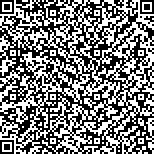王曈,孟萍萍,董凌辉,等.双侧大脑半球高频重复经颅磁刺激对脑卒中后吞咽障碍的影响[J].中华物理医学与康复杂志,2021,43(4):306-310
扫码阅读全文

|
| 双侧大脑半球高频重复经颅磁刺激对脑卒中后吞咽障碍的影响 |
|
| |
| DOI:10.3760/cma.j.issn.0254-1424.2021.04.004 |
| 中文关键词: 脑卒中 吞咽障碍 重复经颅磁刺激 视频透视吞咽检查 表面肌电图 |
| 英文关键词: Stroke Dysphagia Transcranial magnetic stimulation Videofluoroscopy Swallowing Surface electromyography |
| 基金项目:山东省自然科学基金(ZR2020MH282); 山东省重点研究计划(2019GSF108262) |
|
| 摘要点击次数: 6619 |
| 全文下载次数: 7328 |
| 中文摘要: |
| 目的 观察高频重复经颅磁刺激(rTMS)作用于双侧、健侧、患侧大脑半球吞咽皮质代表区对脑卒中后吞咽障碍(PSD)的影响。 方法 选取符合纳入标准的PSD患者45例,按随机数字表法分为双侧组、健侧组和患侧组,每组15例,而双侧组因个人原因退出1例,最终为14例患者纳入研究。3组患者均给予传统吞咽康复训练,由同一位经过专业训练的言语治疗师对患者进行训练指导,每次30 min,1次/日,每周5 d,共2周;3组患者在此基础上分别在双侧、健侧、患侧大脑半球舌骨上肌群运动皮质代表区均给予不同刺激方式的5.0 Hz高频rTMS,刺激的时间和疗程均相同。分别于治疗前和治疗2周后(治疗后),对各组患者进行吞咽造影检查(VFSS)检查,采用渗透-误吸量表(PAS)、功能性吞咽障碍量表(FDS)评估患者的吞咽功能;采用表面肌电图(sEMG)检查测量患者舌骨上肌群均方根值(RMS),评估各组患者的肌肉活动功能;通过测量患者健侧半球静息运动阈值(RMT)来对皮质兴奋性进行评估。 结果 治疗后,3组患者的PAS评分、FDS评分、RMS值较组内治疗前均明显改善(P<0.05);而对于RMT,仅双侧组和健侧组治疗前后差异有统计学意义(P<0.05)。治疗后,双侧组和健侧组的PAS评分、FDS评分、PAS差值、FDS差值、RMT差值分别与患侧组的相应评分比较,组间差异均有统计学意义(P<0.05)。与健侧组比较,双侧组治疗前后FDS评分的差值较大,2组患者治疗后FDS评分的组间比较,差异有统计学意义(P<0.05),而2组治疗后PAS评分的组间差异无统计学意义(P>0.05)。 结论 5.0 Hz高频rTMS刺激双侧、健侧、患侧大脑皮质均可有效改善PSD患者的吞咽功能,其中刺激双侧时效果显著,刺激健侧时效果次之。 |
| 英文摘要: |
| Objective To observe the effect of repeated, bilateral administration of high-frequency transcranial magnetic stimulation (rTMS) in treating post-stroke dysphagia. Methods Forty-five persons with post-stroke dysphagia were randomly divided into a bilateral group (n=14 after one dropout), an affected group (n=15) and a healthy group (n=15). All received 30 minutes of conventional swallowing rehabilitation training 5 times a week for 2 weeks from a speech therapist. Those in the affected group also received 5Hz rTMS applied to the motor cortex controlling the suprachyoid muscle group. The bilateral group received the same stimulation bilaterally with the same duration and treatment course. Videofluoroscopy was used to assess their swallowing before and after the 2 weeks of treatment. It was rated using the penetration-aspiration scale (PAS) and the functional swallowing disorder scale (FDS). Surface electromyography was employed to evaluate suprachyoid muscle function. Cortical excitability was assessed by measuring the resting motor threshold (RMT) of the unaffected hemisphere. Results After the treatment, the average PAS, FDS and muscle function values had improved significantly for all three groups, but significant RMT differences were observed only between the bilateral and the unaffected group. Significant differences in the average FDS and PAS scores were observed after the treatment, as well as significant changes in FDS and muscle function between the affected group and the other two groups. The average FDS scores before and after treatment were significantly different between the unaffected and bilateral group, with the former scoring significantly better than the latter. But no significant differences in the average PAS scores were observed after the treatment. Conclusions 5Hz rTMS of either the unaffected or affected cerebral cortex (or bilateral) can effectively improve the swallowing function of persons with post-stroke dysphagia. Bilateral stimulation has the greatest therapeutic effect, followed by stimulation of the unaffected cerebral cortex. |
|
查看全文
查看/发表评论 下载PDF阅读器 |
| 关闭 |